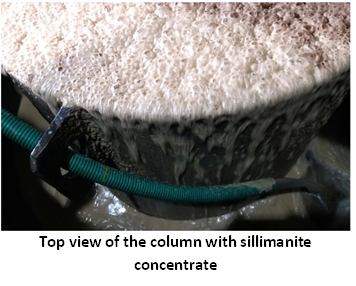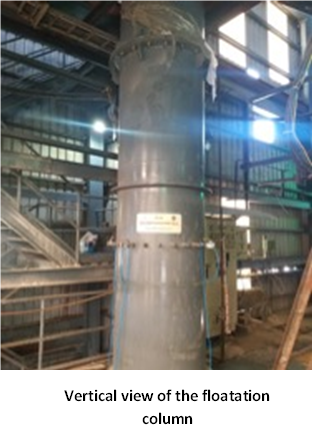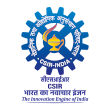Commercialization of CSIR-NML Column Flotation Technology
Commercialization of CSIR-NML Column Flotation Technology
Many industries use different kinds of furnaces and kilns for applying heat. There are different kinds of furnaces such as blast furnaces, arc furnaces, soaking pits, reheating furnaces of iron and steel, rotary kilns of cement manufacturing and general kilns of lime production. As these furnaces and kilns produce high heat, in the order of several hundreds or even thousands of degrees, refractory bricks that can withstand high temperatures are used in the linings of the furnaces. The bricks are lined with minerals that can withstand the high temperatures. One such mineral is sillimanite.
 The beach sands contain many minerals with ilmenite being the most predominant one. Beach sand also contains other minerals such as rutile, zircon, monazite, and sillimanite. The minerals are separated from each other based on their specific gravity, magnetic and electrical properties. Since sillimanite is non-conducting and non-magnetic mineral, flotation technique is adopted to separate it from other gangue minerals, primarily quartz. Flotation technique is used to separate and concentrate ores by altering their surfaces to a hydrophobic or hydrophilic condition. There are different kinds of floatation process; one of which is column floatation.
The beach sands contain many minerals with ilmenite being the most predominant one. Beach sand also contains other minerals such as rutile, zircon, monazite, and sillimanite. The minerals are separated from each other based on their specific gravity, magnetic and electrical properties. Since sillimanite is non-conducting and non-magnetic mineral, flotation technique is adopted to separate it from other gangue minerals, primarily quartz. Flotation technique is used to separate and concentrate ores by altering their surfaces to a hydrophobic or hydrophilic condition. There are different kinds of floatation process; one of which is column floatation.
 Column flotation is commercially used all over the world. Better hydrodynamic conditions and froth washing mechanisms that exist in the flotation column could enhance both recovery and grade, compared to conventional cells. Extensive laboratory studies were carried out at CSIR-NML Madras Centre on feed to sillimanite flotation circuit to arrive at the required reagents’ dosages, optimum grade, and recovery of sillimanite and design parameters of flotation column. M/s McNally Sayaji Engineering Limited, Bengaluru, CSIR-NML’s engineering partner, executed the supply of all equipments and instruments, fabrication, erection, and integration of all sub-systems consisting of air compressor, air dehumidifier, column shells and conditioners etc.
Column flotation is commercially used all over the world. Better hydrodynamic conditions and froth washing mechanisms that exist in the flotation column could enhance both recovery and grade, compared to conventional cells. Extensive laboratory studies were carried out at CSIR-NML Madras Centre on feed to sillimanite flotation circuit to arrive at the required reagents’ dosages, optimum grade, and recovery of sillimanite and design parameters of flotation column. M/s McNally Sayaji Engineering Limited, Bengaluru, CSIR-NML’s engineering partner, executed the supply of all equipments and instruments, fabrication, erection, and integration of all sub-systems consisting of air compressor, air dehumidifier, column shells and conditioners etc.
A flotation column of 1m diameter, 11m height and 5 tonnes per hour throughput capacity was installed. After initial trials in August and September 2019, the plant has been in operation since 27th September 2019, producing sillimanite concentrate of two grades, namely, premium grade (+55% Al2O3) and standard grade (52% - 55% Al2O3) meeting the requirements of various customers
Extensive training has been provided to plant operation personnel for smooth operation of flotation column. Since then, the plant has been in operation, with the Return-On-Investment having been achieved within six months of the plant operation. The management of M/s KMML expressed its appreciation and satisfaction on the functioning of the system and financial accruals out of its operation. This is an example of translation of industrial R&D being pursued by CSIR into implementation at commercial scale.
Dr T V Vijaya Kumar, Scientist In-Charge
CSIR - National Metallurgical Laboratory Madras Centre, Chennai

 Pensioners Corner
Pensioners Corner Screen Reader Access
Screen Reader Access Skip to main content
Skip to main content























